FLUTTERCORD COMIC:




FLUTTERCORD COMIC: <<HEART>>
I’m glad that I can finish this on time.
Season 9 is over, but I know their stories will not stop.
I love them forever.It’s like I know they’ll always love each other.
And now I have to stop updating for study.
I’ll be back in April next year to continue drawing. See U!!!!!
More Posts from Nastysynth and Others


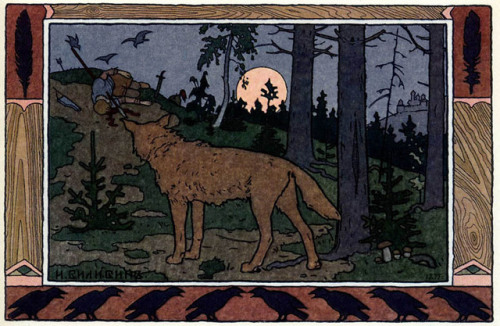
Wolves by Ivan Bilibin.

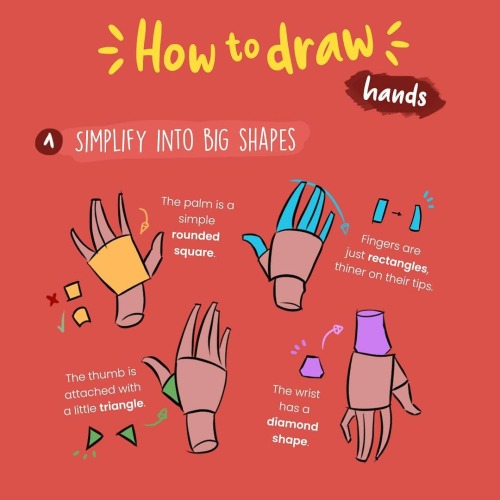
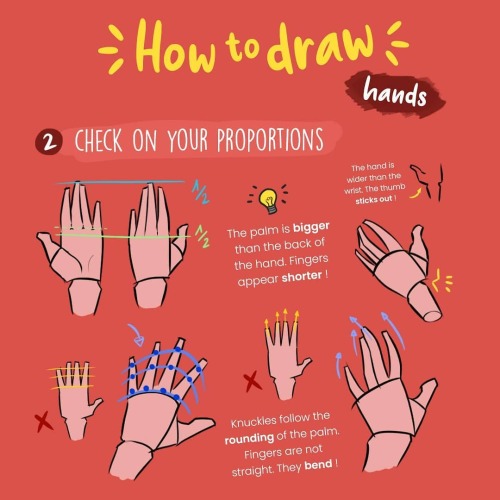
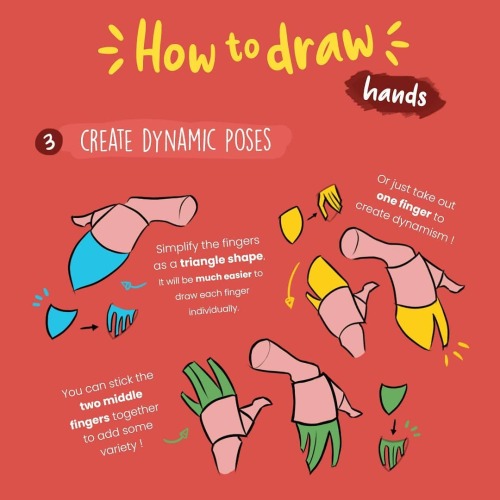

How to Draw Hands by zephy.fr
Support the artist and follow them on instagram!










A basic tutorial on how I do ghoul skin for anon!! I wanted to include how to do fat/veins and stuff underneath the skin, but this tut is already long enough so I just stayed with the basics! Sorry if this is a bit messy, but I hope it helps!
so here’s my blender texturing guide! so many tutorial posts lately…
Czytaj dalej
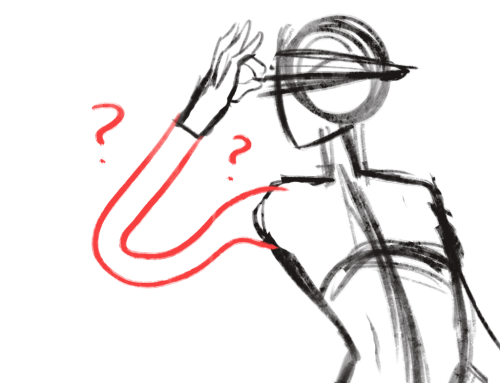
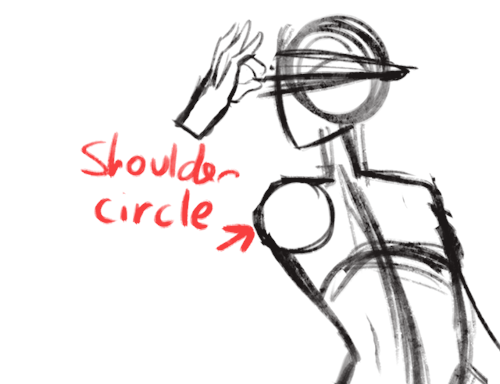
how to draw arms ? ?
Tusks!

no trouble at all! Here are some visual notes on how i approach orc teeth.
1: get familiar with the structure.

The better you can visualise the structure of teeth and where the tusks “plug in”, the easier step 2 will be.
2: simplify.
You only need to draw what will be visible. Don’t worry about drawing the anatomy right every time. If you get familiar with the structure underneath, it will be easier to spot when something’s off in your sketch.

Works for upper tusks and lower! Visualise –> Simplify
About Yarovit-Yarilo

Today I present you my translation of fragments of two polish academic publications that are great favorites of mine. Fragments chosen are centered around Yarovit and Yarilo. My own comments will be indicated by a „trans. note” disclaimer. The fragments below are merely a part of larger text. I apologize for any context lost to the lack of broader perspective on the whole of the publication.
Mitologia Słowian by Aleksander Gieysztor
Chapter V: Principal deities and myths
Subchapter: „Perun’s many ways - Sventovit, Ruyevit & company, Yarovit-Yarilo”
Yarovit-Yarilo
A deity called Yarovit (trans. note: Herovith, Gerovit, pl: Jarowit) was worshipped in two locations settled by polabian Slavs - in pomeranian Wolgast and in Havelberg, a gord inhabited by the Brizans tribe (pl: Brzeżanie). During the mission of bambergian bishop Otton in Wolgost in 1128 one of his priests hid from an angry crowd in a pagan temple, and there found a giant shield covered in golden plates, that was considered untouchable and would only be carried out during war time, as a blessing of good luck. The preacher snatched the sacred shield and ran back out of the temple terrifying the pursuing crowd - in the sput of the moment they thought they see Yarovit himself. One of the writers compares him to Mars, another calls him the god of war - there is no doubt Yarovit was a martial god. It’s hard to tell if there was any statue in his temple, as the escaping priest only noticed the shield. A shield is a ritual object in many martial cults, for example in roman Regia (trans. note: royal house on the ancient Forum Romanum) a most sacred shield was watched over by guards. So called „Stone of Yarovit” in St. Peter’s church of Wolgast (trans. note: Wolgast is now located in the northeast corner of Germany) is a tombstone dating to the earliest christian times. One of the polabian villagers saw Yarovit appear to him „in the robes of his idol” to warn him about the coming missionaries - so there seems to have existed some idol/statue of him (trans. note: episode from Vita s. Ottonis III by Ebonis).
There are no doubts as to the origin of this deity’s name. It came from the root jar-, jaro- meaning strength or severity, but also conveying the idea of stregth coming from youth, as in slavic word „jar” meaning spring. Similar military competences and analogical anatomy of the names strongly connect Yarovit and Sventovit (pl: Świętowit) with one another and with Perun - the supreme warrior god. We could try to follow Ivanov and Toporov (trans. note: famous russian folklorists) in their attempts to strengthen this thesis by means of analysing folklore and comparative religious studies. The baseline for all scholars here is belarusian text from 1846 describing Yarilo as a young man in white robes, barefoot, with human head under his right arm and stalks of rye in his left hand, in a herbal wreath, on a white horse. A ritual, which took place on 27th of April, to welcome spring before the first plowing, was performed by a procession of young girls, one of them dressed as Jarilo, sitting on a white horse, the others singing to her
„Yarilo wandered all over the world / Rye grew high in the fields, he gave women children / And where he set his foot/ There a stack of rye / Where he’s in the grain/ There the stalks grow tall”
Along Yarovit and Yarilo there is also a third name entangled in the cult practices, „Yarun” (pl: Jarun), a ruthenian idol named in Laurentian Codex, as well as a collection of common slavic words, ruthenian „jarovoj” - „of spring” „vernal”; polish word „jare” used to describe grains planted in the spring (trans. note: as opposed to „ozime” grains growing over the winter), ruthenian and czech word for spring „jar”.
As much as we can question the date and quality of this belarusian text it’s undeniable that there is an archaic note ringing in those beliefs - white robes and white horse, flowers and rye stalks, the head held by a victorious rider, the barefoot man, touching the earth with his feet in a cultically significant way, making grain sprout wherever he steps, opening the fields in the spring, with his name, the surveying of the fields. He has been accepted, his traits amalgamated with those of St. George (Sveti Jurij) who is celebrated in some places on 23rd of April (trans. note: julian, not gregorian), accompanied by burning of female effigy called Marena/Marzanna, personifying winter or death, a harbinger of spring. Sometimes young Yarilo is juxtaposed with the old Yarilo, who gives up his place - perhaps loses it in a fight with his young rival.
We can see a bit of a duality shaping up in the image of Yarovit-Yarilo-Yaruna. On one hand he is a warrior, on another an overseer of agricultural activity, which, despite Ivanovs and Toporov’s opinions, doesn’t take any odd naturalistic interpretations on the part of the people as it naturally belongs to the dominion of supreme deities - even Jupiter comes down to bless the roman farmer during his spring festival Vinalii, that falls on… 23rd April.
We also need to examine the toponimastic evidence: the city of Jarilovo and no less than four settlements called Jarilovic in the area od Novogrod the Great. In 18th century diocese of Voronezh festivities were held around an idol called Yarilo from Wednesday to Friday or Saturday in the week after Green Week, as late as 1673 a man would lead the festival, adorned with flowers and bells, with his face painted red and white.
Religia Słowian by Andrzej Szyjewski
Chapter V: The Lost Gods
Subchapter: „Deities of fertility and vegetation”, fragments
We can see the solar hero association even more prominently in Yarovit, worshipped in Wolgast and Havelberg. His very name „Yarovit”, „The Young Victor” is connected to spring, youthful strenght and sexual passion (as in slavic words „jar” - spring, „jurny” - virile, manly, or the phrase „stary ale jary” meaning something along the lines of „old but tough”). This particular god watched over the fertility of fields and forests, humans and beasts - or so we can guess from the threats of Yarovit’s priest made against all those who will choose the „german god” (trans. note: abrahamic god) over their local deity. In Wolgast a sacred golden shield of Jarowit was held described as „great of size and exquisitely made”, a clear solar symbol, that nobody but the god or his priest could touch. As the greatest sanctity in the temple to the polabians it was also a symbol of victory - let’s not forget that Otto of Bamberg describes Yarovit as a war god similar to Mars. As the greatest, untouchable sacred object, and at the same time the harbinger of victory it corresponds fully in its symbolism to the white horse of Sventovit. In the „Vita s. Ottonis” we find a clear reference to Yarovit as the god of military, his name is translated into latin as „Mars” („deo suo Gerovito, qui lingua Latina Mars dictur). Just like with Sventovit we see a trio of interconnected associations: fertility - solar hero - war.
The celebrations of Yarilo mentioned by the missionaries of Otto were likely the planting festival of 15th April. It could involve the god’s „descent” among the people, enacted with the help of the sacred shield. That the god spoke through the lips of żerca (slavic priest) we know from other versions of „Vita s. Ottonis” (trans. note: hagiographic writings about Saint Otto). Scholars try to reconstruct the pre-christian celebrations through XVIII century ethnographic materials concerning Yarilo (admittedly not Yarovit), with ruthenian and belarusian origins. Texts recovered from diocese of Voronezh mention local bishop putting an end to the festivities surrounding Yarilo held on 23rd April in julian calendar (15th of April corresponds in gregorian). In christian context Yarilo is replaced by Saint Jurij (description of the same ritual as one described above follows, girl dressed up as Yarilo, the same song). People would dance circle dances (korovod) on top of the freshly planted fields and end the day with a feast with orgiastic elements. The purpose of the rituals was to close the winter and open the spring; Yarilo opens the gates of earth, letting the spring out.
Yarilo’s attributes clearly point to his role as god of vegetation and fertility. The girl assuming his likeness during the festival, also known as Wiosnołka or Wiesnowka (trans. notes: pronounciation „vyos-NOHW-kah” or „vyes-NOHV-kah”) could be an echo of „divine bride”, an offering to the god, an incentive to arrive with the spring. Many songs refer to Yarilo causing the earth to sprout and bloom as he walks but also summoning dancing girls to him. Circle dances, white robes, white horse and the cut off head are all elements of solar symbolism. The head belongs to Old Yarilo, dethorned and overpowered by his young son. All over the world similar symbols exist - from celtic Curoi to mayan Hunahpu. Young Yarilo matures and dies as the harvest unfolds, then at the end of summer a funeral is held - this time main roles were played by young married women not maidens. They made an effigy of Yarilo (putting some extra effort into shaping his reproductive organs) that they called Kostrub („COST-roob”) and then they put him into his grave, in the ground since in the earth the sun loses it’s powers and dies, letting the new sun take over. The people would sing and cry out about Yarilo dying and ask him to get back on his horse in his golden saddle. Attempts to reconstruct the rituals seem to show that young Jarilo on white horse was juxtaposed with old Yarilo on black goat. Southern slavs practice similar rituals of burning old Badniak (a piece of wood with forked roots) on Christmas Eve to make place for young Božič (son of god). Western Slavs don’t have a deity corresponding to Yarilo - they close the winter in rituals involving Marena/Marzanna, followed by a procession carrying around „maik” or „nowe lato” symbolized by the peak of an evergreen coniferous tree or a rooster as a solar bird.
The Slavs were an agricultural society so agrarian deities were their primary source of relations with divine, cosmic forces. There is a certain myth/archetype that is characteristic for early farmers, the myth of creative murder, in which the first birth, growth and harvest are prompted by the first death - death of a deity, hero, ancestor, who dies sacrificing himself for the people, and from his body the first plants spring, allowing the people to survive. That myth, encated in many cultures in many ways leads to the cincept of a solar god that dies and is reborn cyclically, whose individual fate is reflected by the cycle of growing grain. The stalks loose their heads under the sickles for people to be able to feed. Yarilo (and maybe even Yarovit) makes identical sacrifice.
Art: Jaruna by Ada Konieczna


Pearl is one of my favorite characters from cartoons.
hi! i love your art, it's so pretty ♥ and you draw feet really well, do you have any tips?
thank you a lot anon!! ( /)w(\) here, i made a few notes about the steps i follow while drawing feet:

^ that’s assuming you’re not drawing from a low perspective, as if the camera was on the floor or something like that!


SORRY MY HANDWRITING SUCKS and i’m not really good at explaining things bc i don’t really follow a guide and stuff so yeah BUT I HOPE IT WAS HELPFUL TO YOU!!
can you do a tutorial on how you color your artwork? it's so pretty!! 😍🤩
this is not the best and only way to color but personally i think it’s easy and quite effective for beginner artists who are practicing setting the mood for an artwork or laying out ground work for more detailed illustrations
I’m using Clip Studio Paint for this drawing.
Step 1: The base color

Use magic wand and bucket tool to lay out the base color, you can use different layers for each colors to be more precise, and it’s easier to change the colors later on. I use mainly warm tones for my base color because i prefer the look of it. Step 2: Coloring the lineart

Use a clipping layer above the lineart layer to do this step (there are other ways of course, you can search for them online) Color the lines that isn’t intersected with the background, the inner lines. Especially the skin part to reduce stiffness of the lineart, also help adding shadows.


I usually draw the darkest shadow areas with my lineart so i can color them at the same time.
Step 3: Adding shadow
Group the lineart + base color into 1 big group. Add a clipping layer above that group. Switch the layer mode to “Multiply”. Add the shadow area using a desaturated/grayish hue of your choice to set the mood for the drawing.
Example:
If the mood you want is more broody, use more cool tones (blue, purple,..)


If the mood is more festive or happy, use more warm tones


A drawing should consists both cool AND warm tones, other wise it would look dull. The second example has too much warm tones because the base color is already warm.
Step 4: Add filter layers/adjustment layers
This is where the magic happens. Enhance your art work by adding more Multiply and Overlay layers, set the mood as you like it to look, balancing the tones, play around. I wanted this particular drawing to have an overall cold feeling to it, so I added a blue multiply layer

Adding light with a beige overlay layer, using the airbrush with low opacity. This also help creating contrast between the shadow and light areas

But wait,,, it looks,,,,,, it looks too sad!! they are comforting each other after a terrible situation! Adam is not dead! I need another warm multiply layer!

There, it’s now finished. Quick tip: If your colors are looking off/doesn’t go well with each other, group everything and add a beige multiply layer on top! It would look better instantly! Learning color theory, color harmony also helps A LOT!! find tutorials and study from the masters! Good luck with your art, Anon!
-
 spidermothersposts liked this · 1 week ago
spidermothersposts liked this · 1 week ago -
 machusowl liked this · 1 week ago
machusowl liked this · 1 week ago -
 gonecrazymelody liked this · 1 week ago
gonecrazymelody liked this · 1 week ago -
 predilectionanimation liked this · 2 weeks ago
predilectionanimation liked this · 2 weeks ago -
 alcrux87 reblogged this · 3 weeks ago
alcrux87 reblogged this · 3 weeks ago -
 49fingersnini liked this · 1 month ago
49fingersnini liked this · 1 month ago -
 shegairowmyamo reblogged this · 1 month ago
shegairowmyamo reblogged this · 1 month ago -
 thelockeryoudontown liked this · 1 month ago
thelockeryoudontown liked this · 1 month ago -
 cookiecandy22 liked this · 1 month ago
cookiecandy22 liked this · 1 month ago -
 abcdefghijkarpet liked this · 1 month ago
abcdefghijkarpet liked this · 1 month ago -
 valthecatanthro liked this · 1 month ago
valthecatanthro liked this · 1 month ago -
 geiz3r liked this · 2 months ago
geiz3r liked this · 2 months ago -
 bitesyoubitesyou liked this · 2 months ago
bitesyoubitesyou liked this · 2 months ago -
 echoechogoer liked this · 2 months ago
echoechogoer liked this · 2 months ago -
 ara1111 liked this · 2 months ago
ara1111 liked this · 2 months ago -
 arosebyanyothername9678 liked this · 2 months ago
arosebyanyothername9678 liked this · 2 months ago -
 starryempire liked this · 2 months ago
starryempire liked this · 2 months ago -
 softwafflo liked this · 3 months ago
softwafflo liked this · 3 months ago -
 crazycreative425 liked this · 3 months ago
crazycreative425 liked this · 3 months ago -
 janefairylight liked this · 4 months ago
janefairylight liked this · 4 months ago -
 vengefulbale liked this · 5 months ago
vengefulbale liked this · 5 months ago -
 yanemnogoustal liked this · 6 months ago
yanemnogoustal liked this · 6 months ago -
 pikerthedog liked this · 6 months ago
pikerthedog liked this · 6 months ago -
 animefanart088 reblogged this · 6 months ago
animefanart088 reblogged this · 6 months ago -
 heartof7millet liked this · 6 months ago
heartof7millet liked this · 6 months ago -
 cyberxxxx liked this · 6 months ago
cyberxxxx liked this · 6 months ago -
 ditzdove liked this · 6 months ago
ditzdove liked this · 6 months ago -
 ayakohana reblogged this · 6 months ago
ayakohana reblogged this · 6 months ago -
 splitkyte liked this · 7 months ago
splitkyte liked this · 7 months ago -
 r41nfall liked this · 7 months ago
r41nfall liked this · 7 months ago -
 bugconnoisseur liked this · 7 months ago
bugconnoisseur liked this · 7 months ago -
 sagabmg liked this · 7 months ago
sagabmg liked this · 7 months ago -
 lordmint liked this · 8 months ago
lordmint liked this · 8 months ago -
 blogsharinganita reblogged this · 8 months ago
blogsharinganita reblogged this · 8 months ago -
 fenriagnar liked this · 8 months ago
fenriagnar liked this · 8 months ago -
 calmel244 liked this · 8 months ago
calmel244 liked this · 8 months ago -
 cobbleztone liked this · 8 months ago
cobbleztone liked this · 8 months ago -
 iwantedamogusasmyblogname liked this · 8 months ago
iwantedamogusasmyblogname liked this · 8 months ago -
 briarquartz reblogged this · 9 months ago
briarquartz reblogged this · 9 months ago -
 limpnoodles liked this · 9 months ago
limpnoodles liked this · 9 months ago -
 rayneiing reblogged this · 9 months ago
rayneiing reblogged this · 9 months ago -
 rayneiing liked this · 9 months ago
rayneiing liked this · 9 months ago -
 anitajlaloquita liked this · 9 months ago
anitajlaloquita liked this · 9 months ago -
 yuzuki-ak liked this · 10 months ago
yuzuki-ak liked this · 10 months ago -
 kittokattx liked this · 10 months ago
kittokattx liked this · 10 months ago -
 theironcouple reblogged this · 10 months ago
theironcouple reblogged this · 10 months ago -
 instantreviewfox liked this · 10 months ago
instantreviewfox liked this · 10 months ago

Sylwester | i will mostly post sketches, because i'm too lazy to end them
196 posts